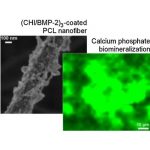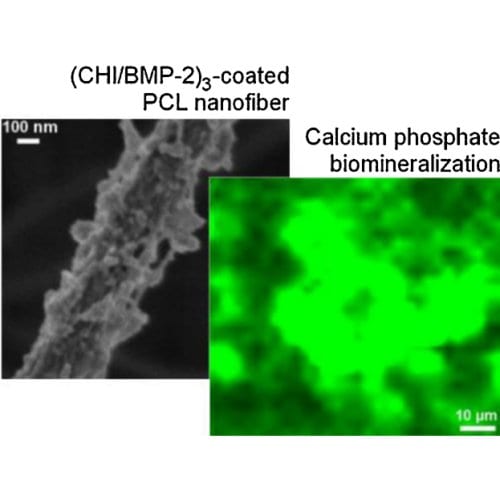Recent progress in polymer materials engineering opens promising routes in medicine for the regeneration of damaged tissues. Modern approaches in the field of biomaterials intend to design new scaffolds that are “biomimetic” in terms of 3D structure and chemical composition, in view to favor host cells colonization and activation . Progressive bioresorption of the scaffolds may also be desired to accompany the reconstruction of the new tissue.
. Progressive bioresorption of the scaffolds may also be desired to accompany the reconstruction of the new tissue.
Researchers from the universities of Strasbourg (France), Rouen (France) and Leuven (Belgium) worked together to enrich nanofibrous membranes made of bioresorbable poly(e-caprolactone) with a bone morphogenetic protein 2 (BMP-2), a growth factor involved in the activation of the cells in charge of bone formation, namely the osteoblasts. To this end, they employed the Layer-by-Layer method consisting in repeated, alternated depositions of BMP-2 and the FDA-approved, polycationic polysaccharide chitosan or poly-l-lysine, to equip the surface of the nanofibers with self-assembled bioactive nanoreservoirs of the growth factor. The biofunctionalized membranes were characterized in details in terms of structure and spatial distribution of the growth factor, and their favorable impact on the activation of osteoblasts and the formation of bone was clearly supported by both in vitro and in vivo inspection.
This approach could also be transferred to the immobilization of other growth factors, in view to design more sophisticated implants and to address the regeneration of other tissues.

















